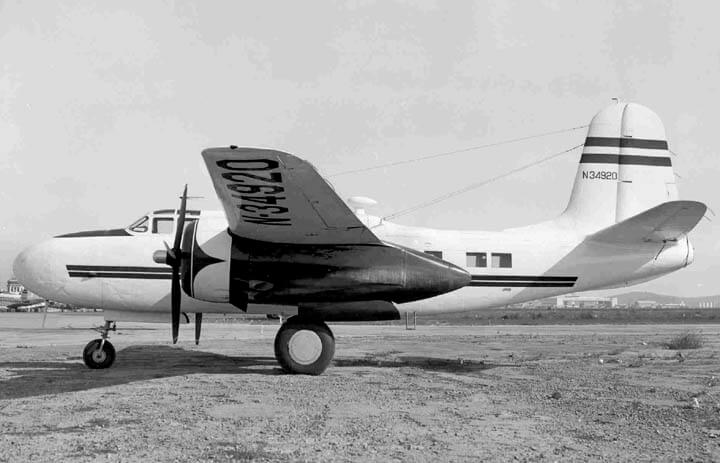Howard Hughes, an eccentric billionaire with love for films and aviation, left a significant mark on the United States airline industry. He designed and flew his own planes, directed movies, collected several world record trophies, and became the main hero in more than one biopics.
How it all started
The future entrepreneur, film producer and aviator Howard Hughes was born into a very wealthy family, in Texas, the U.S., in 1905. His father, Howard R. Hughes Sr. had invented a rotary bit for oil well drilling that brought the family a fortune.
Young Howard Hughes became fascinated with flight in his childhood, after his father took him for a short ride aboard a Curtiss flying boat. The trip sparked in Hughes junior a lifelong love of flying—especially seaplanes.
While he was a private school drop out, Hughes had shown genuine interest in engineering and attended the California Institute of Technology, Pasadena, and at the Rice Institute of Technology, Houston.
After his father died in 1923, Howard Hughes junior inherited all family businesses, including Hughes Tool Company. He became a billionaire at the age of 19, starting his career as a movie producer and aviation enthusiast.
A billionaire who loved cinema and planes
Howard Hughes was known for having two passions: aviation and movie production.
In 1926, he moved to Hollywood to start making films. In 1928, Hughes accumulated the requisite number of flying hours and received a pilot’s license. To learn to fly, Hughes bought a Waco 10 with a 220-hp Wright J-5 engine, which he rebuilt and customized with leather and rubber padding in the cockpit.
Although his directorial debut, the World War I film Hell’s Angels, did not recoup its production costs, the picture became a big hit due to outstanding air combat sequences. 23-year-old Hughes’s movie depicted one of the most fierce dogfights ever captured on film, featuring a steady exchange of blistering gunfire and acrobatic maneuvering of over 40 planes. To fund the movie production, Hughes was using his family oil business profits as the investment.
How Hughes made famous Hells’ Angels scene happen
Under the impression of the Paramount’s 1927 war drama Wings success, Hughes decided to make his own flying film. He started to gather a crew of the most skillful pilots, including the top stunt pilot Frank Tomick who helped Hughes to acquire the needed number of planes and recruit skilled pilots.
Howard Hughes aimed to make his film as realistic as possible, which forced him to acquire as many WWI planes as he could find. Eventually, Hughes purchased around 40 planes, including five D.VIIs, two Royal Aircraft Factory S.E.5as, two Sopwith Snipes, Thomas-Morse S-4C Scouts doubled as Sopwith Camels, Curtiss JN-4 “Jennys”, Travel Air 2000s (“Wichita Fokkers”), and a massive, twin-engine Sikorsky S-29A.
Part of the planes, including Sikorsky S-29A, were transformed into machines that would resemble German warbirds. To fly them, Hughes hired professional stunt pilots, including Roscoe Turner, Frank Clarke, Al Wilson, Roy Wilson, Leo Nomis, Ira Reed, Ross Cooke, and Maurice “Loop Loop” Murphy.
The film-production process was tough and marked by the deaths of several pilots and a mechanic, costly delays and conflicts between the perfectionist Hughes and the rest of the filming crew.
Hells’ Angels was finally released on May 27, 1930. The production costs reached $2.8 million, making the film one of the most expensive movies made to date.
Latter aviation innovations and escape from public life
After his career in Hollywood, Hughes concentrated on aviation. In 1932, he established Hughes Aircraft Company, which eventually became a major aerospace and defense contractor. Hughes personally set a series of aviation records.
In 1935, he established the world’s speed record of 352.46 miles (567.23 km) per hour flying an airplane of his design over land. Hughes’ latter records included a transcontinental flight from Burbank, California, to Newark, New Jersey, in 7 hours, 28 minutes and 25 seconds, and an around-the-world flight on Lockheed 14, which lasted three days, 19 hours and 17 minutes.
Interested in commercial aviation, Hughes acquired almost 6 million or about 76% shares of the airline stock, including Trans World Airlines (TWA), Air West, and Northeast Airlines shares, in the period between 1939 and 1970.
In collaboration with TWA President Jack Frye, Hughes prepared specifications for a new four-engine aircraft that would have more range and speed than the twin‐engine DC‐3. Hughes directed ventures with Lockheed, including the Constellation (aka “Connie”) for TWA. The machine was well-received for its record speeds and helped TWA regain its popularity on the market. During World War II, Hughes focused on military aviation and acquired several government contracts, notably for the Hughes XF-11 and the H-4 Hercules. Nicknamed Spruce Goose, the plane was intended to transport troops and materials across the Atlantic Ocean during World War II. H-4 Hercules was completed in 1947, but flew only once and never went into production.
Howard Hughes piloted all the planes that he designed, and got into several air crashes. After another air accident, always introverted and reclusive Hughes eventually removed himself from the public and settled in the penthouse of the Desert Inn in Las Vegas, Nevada. He conducted all of his business from there. His last days Hughes spent often changing his location and died in 1976 while on route to Houston for medical treatment.

